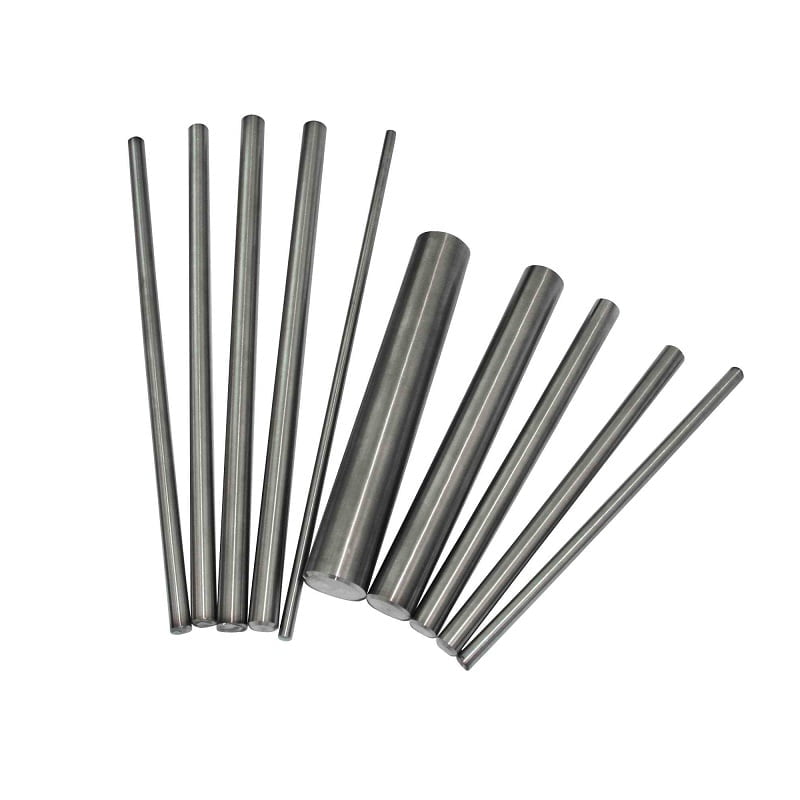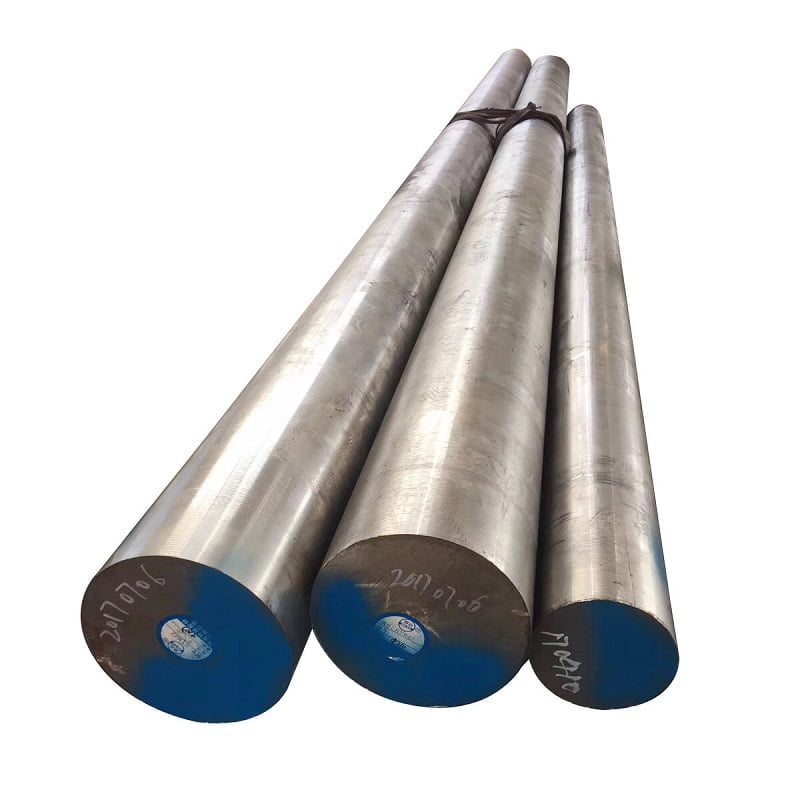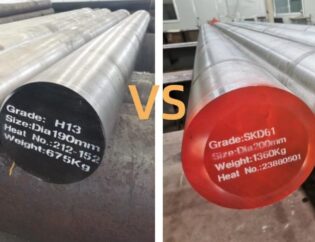
I voti in acciaio sono essenziali per varie applicazioni di ingegneria e produzione, con ogni tipo che offre proprietà uniche che lo rendono adatto a usi specifici. Questo confronto esplora l'acciaio 12L14 e 4140 per evidenziare le loro differenze di composizione, proprietà meccaniche, applicazioni, capacità di trattamento termico, saldabilità e costi.
Panoramica dell'acciaio 12L14
12L14 è un acciaio a basse emissioni di carbonio che è noto per la sua eccellente lavorabilità. È comunemente usato nelle industrie in cui la lavorazione di precisione è fondamentale per la produzione di componenti di alta qualità.
Composizione chimica di 12l14 acciaio
La composizione chimica di 12L14 è vitale per la sua lavorabilità e le prestazioni complessive. La composizione tipica è la seguente:
| Elemento | Composizione (%) |
|---|---|
| Carbonio (C) | ~ 0,12% |
| Manganese (Mn) | ~ 0,60% |
| Fosforo (P) | ~ 0,04% |
| Zolfo (S) | ~ 0,26% |
| Piombo (Pb) | ~ 0,15% |
Il lead viene aggiunto per migliorare la lavorabilità, rendendo questo grado in acciaio particolarmente intuitivo per applicazioni di lavorazione di precisione.
Proprietà meccaniche in acciaio 12L14
Le proprietà meccaniche di 12L14 svolgono un ruolo cruciale nelle sue applicazioni. Ecco le sue proprietà chiave:
| Proprietà | Valore |
|---|---|
| Resistenza alla trazione | 58.000 - 75.000 psi |
| Resa | Circa 38.000 psi |
| Durezza | Circa 85 HRB |
| lavorabilità | Eccellente |
| Duttilità | Buono per applicazioni di stress da basso a moderato |
Applicazioni di 12l14 acciaio
A causa della sua eccezionale lavorabilità, 12L14 è comunemente utilizzato nelle applicazioni che richiedono una lavorazione di precisione. Gli usi comuni includono:
| Tipo di applicazione | Descrizione |
|---|---|
| Parti di precisione lavorata | Componenti che richiedono tolleranze strette, come raccordi e corpi valvole. |
| Elementi di fissaggio | Adatto a viti e bulloni a causa della facilità di lavorazione. |
| Ingranaggi | Utilizzato per ingranaggi a basso carico in vari macchinari. |
| Componenti idraulici | Ideale per raccordi idraulici e componenti con dimensioni coerenti. |

Panoramica di 4140 acciaio
L'acciaio 4140 è un acciaio in lega di medio carbonio noto per la sua resistenza, durezza e eccellente resistenza all'usura. Viene spesso utilizzato in applicazioni ad alta stress che richiedono durata e tenacità.
Composizione chimica di 4140 acciaio
La composizione chimica di 4140 è progettata per fornire resistenza e resistenza migliorate. La composizione tipica include:
| Elemento | Composizione (%) |
|---|---|
| Carbonio (C) | 0.38 - 0,43% |
| Manganese (Mn) | 0.60 - 0,90% |
| Cromo (Cr) | 0.80 - 1,10% |
| Molibdeno (Mo) | 0.15 - 0,25% |
| Fosforo (P) | ≤0,04% |
| Zolfo (S) | ≤0,05% |
Gli elementi di lega aggiuntivi come il cromo e il molibdeno migliorano la intensità e la resistenza all'usura dell'acciaio.
Proprietà meccaniche di 4140 acciaio
4140 acciaio presenta proprietà meccaniche eccezionali che lo prestano bene alle applicazioni ad alte prestazioni. Ecco le sue proprietà chiave:
| Proprietà | Valore |
|---|---|
| Resistenza alla trazione | 90.000 - 100.000 psi |
| Resa | Circa 60.000 psi |
| Durezza | Fino a 50 HRC (trattato termico) |
| lavorabilità | Moderare |
| Duttilità | Bene, specialmente nelle condizioni ricotti |
Applicazioni di 4140 acciaio
A causa della sua resistenza e tenacità, 4140 acciaio è ampiamente utilizzato nelle applicazioni che richiedono alte prestazioni e durata. Gli usi comuni includono:
| Tipo di applicazione | Descrizione |
|---|---|
| Aste | Utilizzato nei componenti della trasmissione di potenza che richiedono resistenza all'usura e alla deformazione. |
| Ingranaggi | Adatto per applicazioni di ingranaggi ad alto carico, spesso trattati per il calore per ulteriore resistenza. |
| Alberi a gomito | Comunemente usato nelle applicazioni automobilistiche a causa della sua resistenza alla tenacità e alla fatica. |
| Distribuitori per impieghi pesanti | Ideale per applicazioni che necessitano di alta resistenza alla trazione e durata. |
lavorabilità
La lavorabilità si riferisce alla facilità con cui un materiale può essere tagliato e modellato durante i processi di lavorazione, il che influenza significativamente l'efficienza della produzione.
| Caratteristica | Acciaio 12L14 | 4140 acciaio |
|---|---|---|
| Facilità di lavorazione | Eccellente; Il contenuto di piombo migliora il taglio e riduce l'usura dello strumento. | Moderare; Richiede tecniche di lavorazione precise e può comportare una maggiore usura degli strumenti. |
La facilità di lavorazione in 12L14 significa che è spesso preferita per la produzione ad alto volume di piccole parti, mentre 4140 può richiedere cure maggiori e strumenti speciali.
Capacità di trattamento termico
Il trattamento termico svolge un ruolo cruciale nel migliorare le proprietà dell'acciaio, in particolare per le applicazioni che richiedono elevata resistenza e durezza.
| Caratteristica | Acciaio 12L14 | 4140 acciaio |
|---|---|---|
| Trattamento termico | Generalmente non trattati con calore; Utilizzato in condizione as-roll per conservare la lavorabilità. | Altamente trattabile per il calore, consentendo processi come tempra e tempera per migliorare significativamente la durezza e la resistenza. |
La capacità di 4140 di essere trattata con calore gli consente di eccellere in applicazioni in cui la resistenza ad alta resistenza e usura è fondamentale.
Forgiatura a caldo
La saldabilità è una caratteristica essenziale che influisce su quanto facilmente diversi gradi di acciaio possono essere saldati insieme durante la fabbricazione.
| Caratteristica | Acciaio 12L14 | 4140 acciaio |
|---|---|---|
| Caratteristiche di saldatura | Non raccomandato per la saldatura dovuta al piombo, che può compromettere l'integrità della saldatura. | Può essere saldato, sebbene il preriscaldamento sia spesso necessario per ridurre al minimo il cracking; Dovrebbero essere utilizzati tecniche di saldatura e riempitivi adatti. |
La mancanza di saldabilità in 12L14 può limitare le sue applicazioni in alcuni scenari di progettazione in cui è richiesta la saldatura, mentre 4140 offre più versatilità nella fabbricazione.
Costo e disponibilità
Il costo e la disponibilità possono essere fattori significativi che influenzano la scelta dell'acciaio nei processi di produzione.
| Caratteristica | Acciaio 12L14 | 4140 acciaio |
|---|---|---|
| Costo | In genere più costosi a causa di elementi di piombo e lega, sebbene i risparmi possano derivare dalla sua lavorabilità. | Generalmente meno costoso di 12L14; Disponibile in varie forme e tende ad avere un'ampia presenza di mercato a causa della sua versatilità. |
La disponibilità di 4140 in diverse dimensioni e forme lo rende una scelta attraente per una varietà di applicazioni ingegneristiche.
Sommario e conclusione
Il confronto con l'acciaio 12L14 e 4140 rivela differenze significative che rendono ciascuno adatto per applicazioni distinte.
| Caratteristica | Acciaio 12L14 | 4140 acciaio |
|---|---|---|
| Attributi primari | Eccellente macchinabilità, basso carbonio | In lega ad alta resistenza, trattabile con calore e medio-carbonio |
| Composizione chimica | Basso carbonio; Il piombo migliora la lavorabilità | Carbonio medio; Il cromo e il molibdeno migliorano la forza |
| Proprietà meccaniche | Tensile moderata e resistenza alla snervamento | Alta resistenza alla trazione e durezza |
| Applicazioni | Parti di precisione, dispositivi di fissaggio, componenti idraulici | Alberi, ingranaggi, componenti automobilistici |
| lavorabilità | Superiore a causa del contenuto di piombo | Moderato, necessita di tecniche di precisione |
| Trattamento termico | In genere non trattati con calore | Può essere trattato termicamente per le proprietà migliorate |
| Forgiatura a caldo | Non è adatto per la saldatura | Può essere saldato con tecniche appropriate |
| Costo e disponibilità | Materiali di lavorazione specializzati a costo più elevato | Più economico, ampiamente disponibile |
In conclusione, la scelta tra 12L14 e 4140 acciaio dipende da requisiti specifici del progetto, come la priorità di lavorazione di precisione o di alta resistenza. Ogni grado in acciaio ha i suoi vantaggi e limiti, rendendo essenziale per ingegneri e produttori per valutare le loro esigenze prima di selezionare il materiale appropriato. Se hai ulteriori domande o hai bisogno di ulteriori informazioni, non esitate a chiedere!

